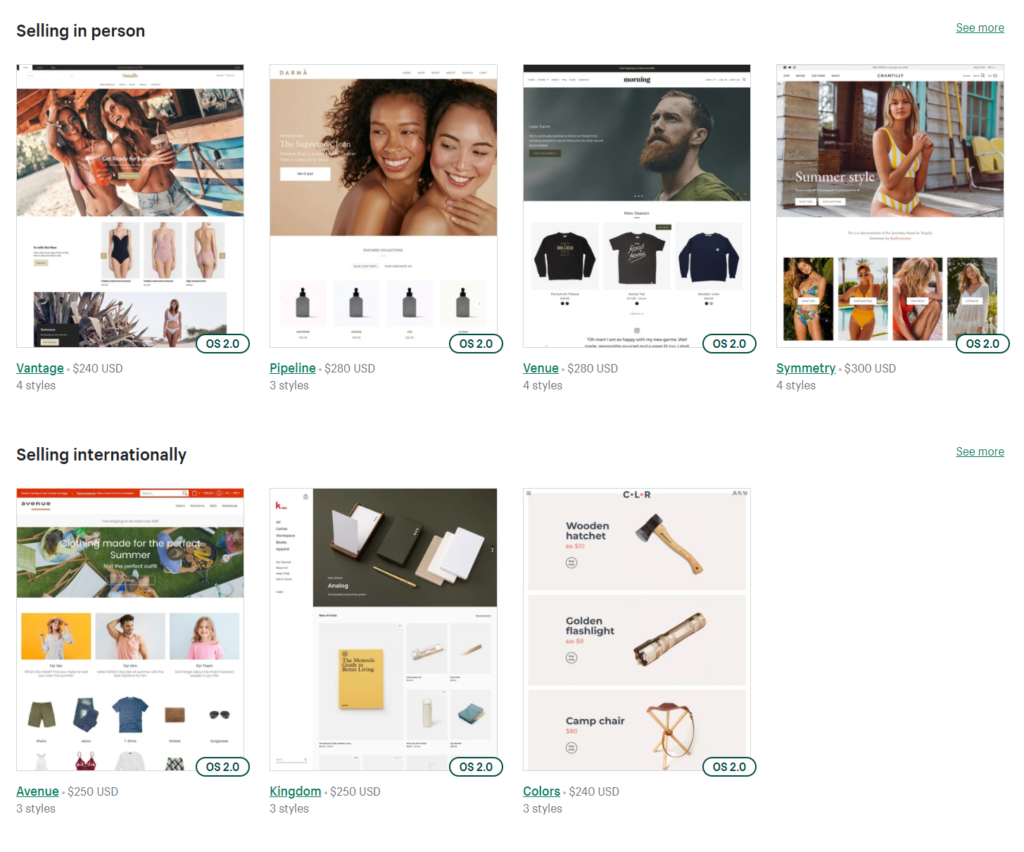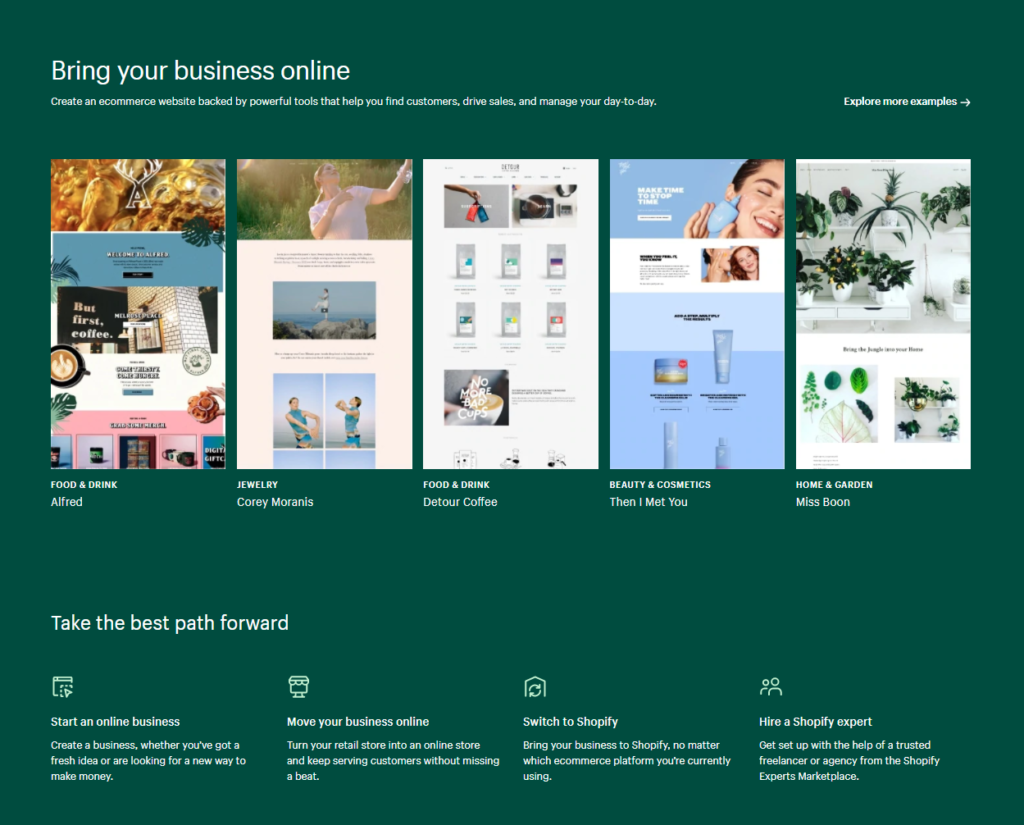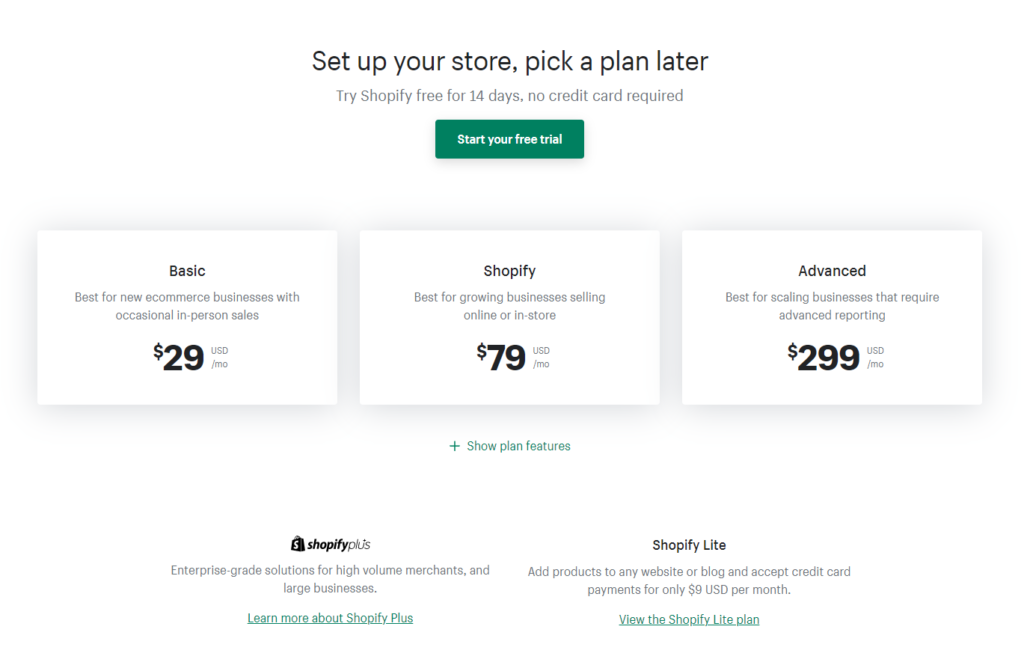Shopify is one of the most popular platforms for starting an e-commerce business. It is designed to be easy to use, safe and efficient. It allows you to migrate even large stores, and setting up a small e-commerce on Shopify should not take more than a few hours. However, universal solutions also have their shortcomings, so at some point the help of a project team with experience seems to be a necessity anyway.
What are the pros and cons of the Shopify ecommerce platform?
Shopify was originally intended to be an ordinary online store – for snowboarders. In 2004, when e-commerce was not as popular as it is today, it was not surprising that it was precisely for this innovation-loving environment that an online store was created. Almost 20 years later, it became known that Tobias Lütke and Scott Lake had created a hen that lays golden eggs. Shopify is one of the largest SaaS platforms in the e-commerce world.
When starting his business online or when expanding his store, the entrepreneur must seriously consider what options he has. Shopify is one of the most common choices. Let’s check the advantages and disadvantages of this Canadian platform. This is particularly important, because as many as 80% of consumers in Poland made online purchases at least once in 2021. The percentage of buyers, as well as the frequency of purchases, will only increase, so the online store must function perfectly to withstand the growing competition.
Shopify – you don’t need to have coders on board to get started
Shopify is a SaaS platform and this fact alone means many advantages for those who decide to use this model of running their e-commerce store. The SaaS model is called software as a service that runs in the cloud space. When buying the service, you do not have to deal with infrastructure maintenance, updates, and technical support is also included in the package. In the SaaS service, it is the buyer who decides which modules and functionalities he wants to use, and possible modifications and adding new tools is simple and intuitive.
Ease of use is one of the biggest pluses of Shopify. The store itself can be set up in a few hours and during this time its functionalities can be adapted to the state that will be interesting for customers. Already at this stage, the first serious savings appear, because you save time, but also money needed to create a shopping portal and the work of an IT specialist.
Shopify offers its customers a variety of templates and graphical solutions that will make any e-commerce store stand out. This is very important, because although it is one of the largest platforms facilitating the creation of an online store, it can still be unique.

Start-ups or small e-commerce stores can stop there, but the next step in development and increasing sales should be the involvement of a team of specialists. First of all, it is worth using the services of a UX / UI designer, this specialist checks whether the so-called the user experience during the purchasing process is optimal, intuitive, and from the seller’s point of view, it has the best effect on the conversion. Then the front-end development team will adjust the page view so that it is not only attractive, but also adapted to the UX / UI designer’s remarks.
The headless commerce technology allows you to add a PWA application to a store built on the Shopify basis. These are web applications that allow you to maximize the positive user experience when using mobile devices. professional development teams have PWA specialists on board.
Migrate to Shopify – and you’ll be on time
The ease of use of the Shopify platform means that not only the store template and the choice of functionalities or payment methods can be done quickly. Adding products or integrating with logistics systems is also not a major problem – even for people who are not IT proficient. Importantly, introducing an assortment to the online store is also not a time-consuming process. Of course, large stores will need more time, and they will effectively migrate to the Shopify platform. However, in order to have full knowledge about products and skillfully analyze data, the basic version of Shopify should be supported with PIM systems (eg Akeneo). Thanks to them, it is easier to manage products, content or introduce products to the portfolio – especially in a multilingual environment.
Shopify – security as the primary goal
When you buy Shopify, you don’t have to worry about the security of your store or your data. As a rule, the platform is aimed at people who want to save time and money on broadly understood IT administration, as well as those whose knowledge about these processes is not specialized.
Saving on the security of the portal itself, personal data or payment systems, however, is not an option. Therefore, deciding on the Shopify offer, the e-commerce operator has highly developed security systems in the package, e.g. PCI DSS compliance, 3-D Secure authorization, which protect customer data, but also secure the sales process.

Shopify – high performance at an affordable price
Well over a million stores on one platform may raise doubts as to whether the system will be an emergency. Nothing could be more wrong. Shopify is already a huge enterprise and several thousand employees take care to prevent trouble. Even if a failure occurs, the time to go straight is almost immediate and as a rule, an e-commerce store operator on Shopify does not have to worry that his business will remain inactive for a long time. Server performance? It does not raise any objections, and the customers of online stores will not even have time to blink an eye when the products they choose go to the basket.
Shopify – broad development opportunities
Shopify also offers many add-ons in its application store, which not only help to diversify the sales portal, but also facilitate sales, conduct data analysis, and facilitate marketing and customer service. The number of applications is almost overnight, but you can also create your own add-ons and, once approved by Shopify, they will go to the official app store.
When using Shopify, an ecommerce operator does not have to close to other sales paths. Multichannel is a strong point of the platform, because it is very easy to integrate your store with products from other technology giants. Suitable plugins allow you to connect sales with Amazon, Instagram, Facebook or other places on the network where you can find potential customers.
There are many possibilities, but it is the e-commerce operator who bears the risk of not having sufficient knowledge and not adapting the tools to the needs. A team of experienced specialists is able to help the customer with the settings, configuration and changes that Shopify introduces very often.
Shopify – there are no perfect solutions
Shopify is a platform designed to simplify your e-commerce business. Thus, it inevitably focuses on the universality of solutions and, therefore, they are not always adapted to local solutions and conditions.
The biggest disadvantage of Shopify is additional costs, e.g. related to payment systems. The platform provides its payments, but if the store wants to use others, a commission is charged for it.

You should also take into account additional costs during the sale, because a commission is charged at this point. Depending on the package, it is up to 0.5% to 2%. The more expensive the subscription we choose, the lower the „tax” on sales, of course.
There is no need for the store operator to pay for the trial period of 14 days. This is enough time to test all the features of the Shopify platform. Later, however, you must pay for the selected package. The basic version will allow you to run a simple online store, but the more functionalities, the subscription grows. I must admit that in the case of large and extensive e-commerce, the fee can be really high, and the current price list is as follows:
- Basic plan – $ 29
- Shopify plan – $ 79
- Advanced plan – $ 299,
- Shopify Plus plan – from $ 2,000.
All billing takes place in 30-day periods.
But do you need something more? Professional advice from a UX / UI designer, support from a front-end team or PWA application? The Blue Owl team is at your disposal. Contact us for a free quote or consultation.

